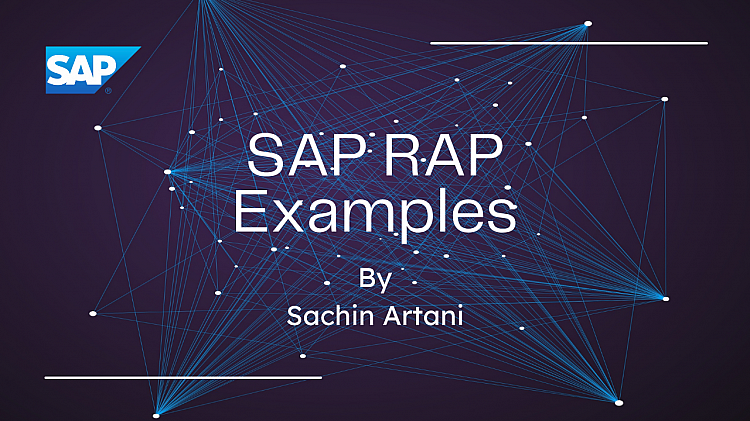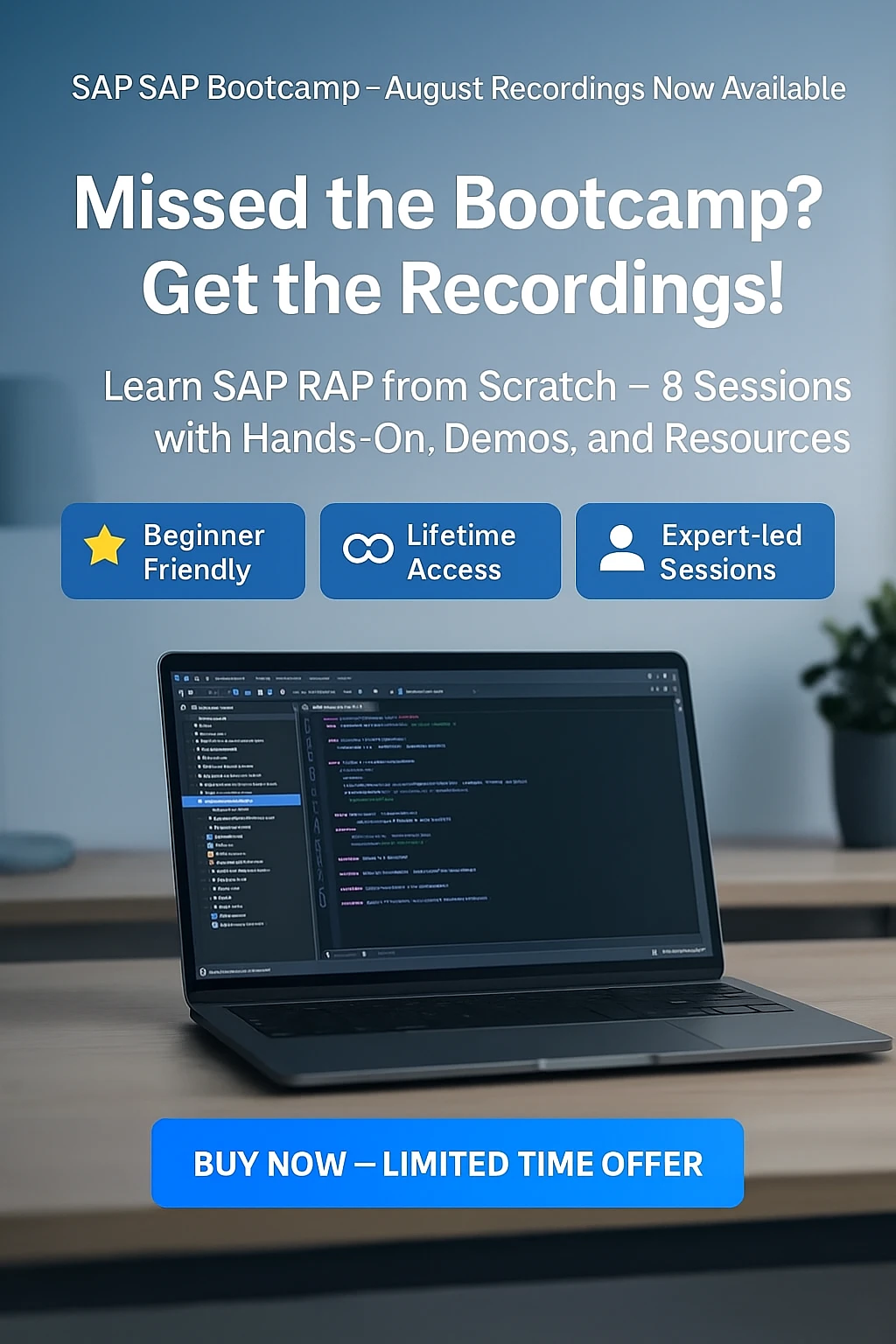If you're exploring the ABAP RESTful Application Programming Model (RAP) and wondering how it’s being used in real-world projects, here are five practical examples from my own journey.
Each project had unique business requirements and involved various RAP concepts like managed/unmanaged scenarios, semantic navigation, integration with BAPIs, Web APIs, and background processing.
1️⃣ Custom RAP App in SAP BTP Fetching Vendor Data from S/4HANA
This was my first RAP application back in 2021. The requirement was to replicate and modernize an existing Web Dynpro solution using RAP on BTP.
We created a custom RAP-managed app in BTP that displayed vendor master data from S/4HANA. The architecture included:
-
Custom Z tables in BTP to store vendor data
-
RFC-enabled function modules in S/4HANA to send vendor master records
-
Application Job Templates in BTP to schedule periodic data sync
The app handled parent-child hierarchies and multiple vendor data segments. It displayed data in a Fiori UI using RAP-managed scenario.
2️⃣ Extension to Standard FSCM Apps Using Custom RAP Applications (S/4HANA)
We were tasked with extending two standard FSCM RAP applications:
-
Manage Credit Limit Requests
-
Manage Credit Accounts
Due to enhancement limitations in these standard applications, we built two custom RAP apps in S/4HANA.
The enhancements included:
-
Adding custom fields and sections in object pages
-
Adding new lists inside those sections
-
Making some standard fields read-only
-
Linking standard apps to custom apps using semantic navigation
To keep data in sync (as standard apps used standard DB tables and custom apps used custom Z tables), we created background jobs that performed daily data syncing between the two.
If you are interested to know exactly how I developed this solution, click here.
3️⃣ RAP Utility to Upload & Process Excel Data
This RAP-based utility in S/4HANA allowed users to upload Excel files and create business records.
We developed it as a PoC and later extended it into a production-grade app.
Key highlights:
-
Users uploaded Excel with required data
-
Backend logic parsed the Excel content
-
Data was validated and BAPIs were called to create records
-
Messages were shown back to the user in the Fiori screen
➡️ Related blog: Upload Excel using SAP RAP only
4️⃣ RAP-Based OData V4 Web API for Mass Profit Center Creation
We built a Web API (no UI involved) that accepted incoming data from SAP CPI or any external system to create mass profit center records in S/4HANA.
Here’s what the architecture looked like:
-
The API was built using RAP (OData V4,
CREATEoperation) -
Data came in bulk via a single call
-
The RAP handler triggered BAPI_PROFITCENTER_CREATE to create records in the backend
However, since BAPIs often contain COMMIT WORK, they cannot be called directly in RAP behavior classes.
✅ Possible solutions to call BAPI in RAP inside a separate task:
-
Use Application Jobs framework
-
Use Parallel Processing with parallel class - CL_ABAP_PARALLEL
-
Or, like in this case, use BGPF (Background Processing Framework)
💡 Read how I achieved mass processing: LinkedIn Post on RAP Mass Processing
Since BGPF runs in the background, we couldn’t send feedback to the UI directly. So the job status and logs were tracked separately.
5️⃣ Custom RAP App to Manage Purchase Requisition Records (EBAN Table)
This is an unmanaged RAP application that shows, create and updates purchase requisition data from EBAN table.
Key points:
-
Built a Fiori app (unmanaged RAP) with no child entity
-
App included extensive field validations
-
Used BAPI in Save Sequence to update EBAN entries
-
Proper success/error messages shown on the UI using RAP messaging features
Since BAPI usage was required, unmanaged scenario was the obvious choice to retain full control over update logic.
Wrapping Up 🔚
Each of these RAP projects helped me explore RAP’s real-world use beyond simple CRUD. Whether it was integrating with BAPIs, enabling semantic navigation, building Web APIs, or handling background tasks, RAP has proven to be a powerful and flexible framework for enterprise applications.
If you're serious about learning RAP, these hands-on examples will give you practical direction on how to apply RAP to real-world scenarios.
📌 Save and share this post. More RAP project learnings and blogs coming soon!
🤝 Want to connect or learn RAP with me?
You can reach out via Topmate for mentoring, 1:1 sessions, or doubt clearing!







